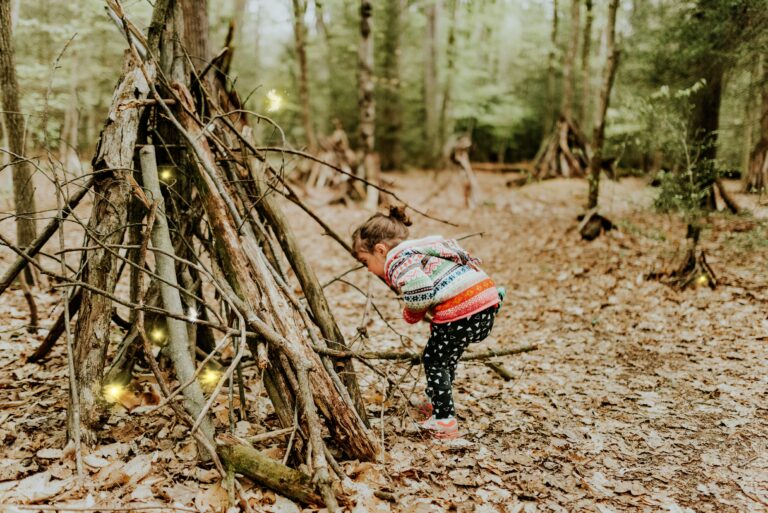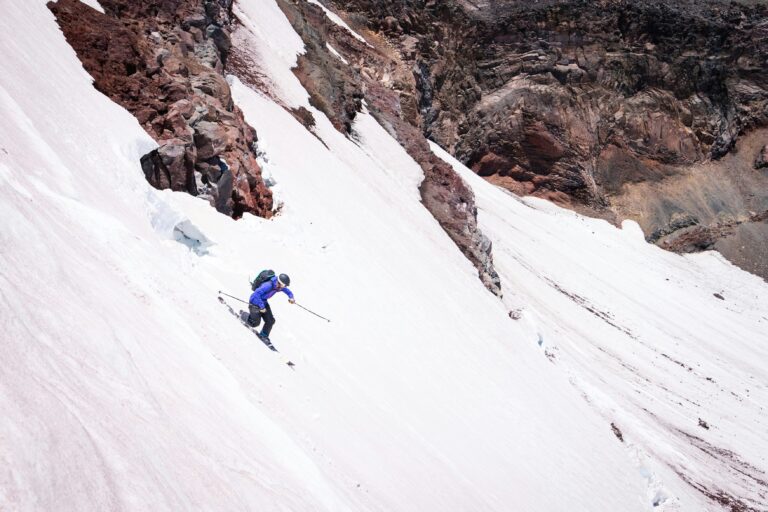How to Ski: Teach Your Toddler with These 30+ Amazing Tips in 2025
Teaching your toddler how to ski is a challenging, but rewarding experience. Read these tips to help get them on the slopes this year.

Last Updated on 3 May 2025
There’s nothing more rewarding than seeing your toddler on skis up a mountain enjoying themselves in the snow. I’ve taken our three-year-old daughter to ski lessons for a few years. We’ve also been to the mountains a couple of times and I can see her enjoying it more the older she gets. Now that we’ve got another daughter, I’m looking forward to taking her skiing too.
For the first-time skier, skiing can be a daunting experience, but if it’s done right, your toddler will love skiing and you’ll have great adventures on holiday together.
Teaching your toddler how to ski is going to be challenging. Skiing is a different experience from anything your toddler will have done before, but that certainly shouldn’t put you off. Once they get started your first-time skier will develop more confidence as they continue practising and skiing will become easier for them.
In this post, I’ll show you the best way you can teach your kids how to ski with these handy ski tips that will see them going from flat ground skiing to tackling steeper hills in the mountains.
What is the Best Age to Teach Your Toddler to Ski?

Introducing your toddler to skiing is an exciting moment for parents who enjoy snow sports.
For those who are thinking about getting their children on the mountain, they tend to sign them up for lessons as soon as they can, so they can get the most enjoyment out of their holidays.
But what is the best age for toddlers to start?
Here in the UK, most ski centres will take toddlers from the age of three-years-old. This is usually a good age to start; however, there are several factors to take into consideration beforehand. These include:
Your toddler’s physical development;
Their ability to listen to the ski instructor; and
How they are around others.
While some children start skiing at the age of 1, these tend to be families who live in the mountains and it’s a way of life for them. Another thing to remember, those who start at this age are just getting to grips with the idea of it, the equipment, and the snow.
You’ll find when you’re away that most ski schools won’t accept children under the age of two as they aren’t able to hold themselves up in their ski boots while manoeuvring their skis. This could see them disliking the sport and there is the risk that they may end up hurting themselves.
Teaching Your Toddler How to Ski
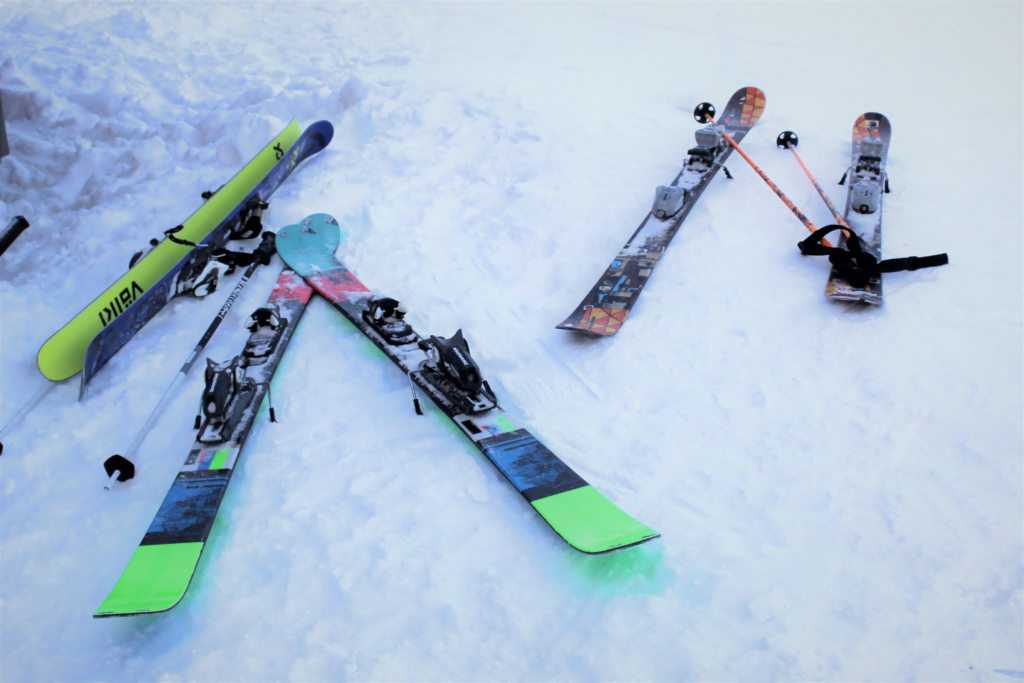
Whether you’re old or young, skiing is a sport that takes time to master. This is why many parents decide to get their children learning at a young age, especially if they enjoy snow sports such as snowboarding or skiing.
When we took our eldest on her first ski trip we went to Austria. It was in 2022 and as we know the mountains there, we found a gentle slope for her to practice skiing. As both of us snowboard when we’re away, it was important for us to get our daughter on the snow as soon as possible.
So when she turned two, I signed her up to ski lessons to learn how to ski. Every week for 18 months she’s been enjoying these and it’s been great watching her advance her skills and gain the confidence to want to learn more.
For our latest mountain trip to Avoriaz, our daughter enjoyed skiing a lot more as she knew she had the basics under her belt.
Seeing the satisfied look on her face when she knew she could do it was a great sight to see.
If you’re looking into getting your little ones into skiing, here’s what to consider before hitting any ski resorts:
Get them into some ski lessons before going away, if you can. Even if you’re going to put them into ski school on your ski holiday, it will greatly enhance their experience by taking advantage of those first ski lessons.
Another added benefit of a ski lesson is that when toddlers are learning how to ski on a gentle slope, they are more likely to listen to their ski instructor where they will learn how to control their speed.
Ski instructors also have years of experience and will know the best exercises, techniques, and teaching methods designed to get your toddler skiing correctly. As parents, we may have picked up a few bad habits along the way, so by getting a ski instructor to do the teaching, you’re avoiding the possibility of transferring those bad habits across.
Let them advance at their speed. As a parent, it’s easy to forget that your toddler is learning the ropes of how to ski. If you want them to enjoy it and return for more, it’s important to go at their speed. If they only want to ski for 30 minutes and make snow angels the rest of the time, that’s fine. It’s their holiday too, so let them enjoy it in their own way.
Most ski resorts will have a beginner’s area or a bunny hill where your toddler can get to grips with their ski boots and skis on the snow. If this is your toddler’s first time on the snow, and all they’ve skied down is a dry ski slope, then skiing on snow may take a bit of adjustment.
It’s easy to get intimidated by other skiers. With skiing and snowboarding being such popular sports, ski resorts tend to get busy with holiday-makers making the most of the ski slopes. If this is your toddler’s first time on snow, it can be a bit overwhelming for them with other skiers around.
It’s natural to want to look at everybody else rather than focusing on what they’re doing, but try to get them to concentrate on what they’re doing instead of everybody else as this is when accidents are likely to happen.
Don’t forget this is all about having fun. Your toddler isn’t going to master the sport overnight, but with consistent practice and enjoyment of the sport, they will continue to advance their skills. At such a young age, all they need to do is enjoy skiing; the rest will come naturally.
17 Beginner Tips for Toddlers Learning How to Ski
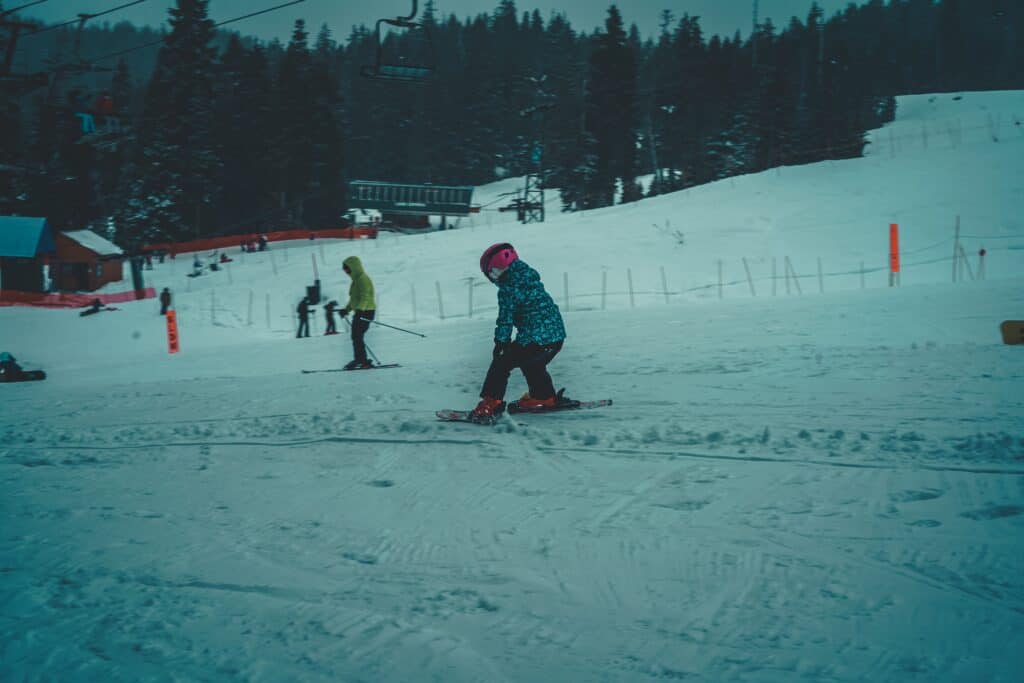
So you’ve decided to take your toddler skiing. Skiing is a great sport to try and if you’re lucky enough to have a go, make the most of it.
But when it comes to hitting those green slopes, what do you need to know to ensure your toddler has a great skiing experience?
Initially, teaching your toddler to ski will involve them gliding on a flat surface. Get them positively used to the snow. Make the idea of skiing fun and exciting. Don’t force anything and let them go at their own pace. If you have a ski harness or rope tow, strap this to them so you can pull them along while getting them to bend and touch their knees as they lean forward.
Keep those initial ski lessons short and sweet. If your toddler has never been skiing before, you may find they only want to ski for 30 minutes or so. That’s plenty of time to get them started skiing. After that, take some time out to play in the snow before heading back inside to warm up.
Speaking of staying warm, ensure they’re wearing the right kit, including snow pants, gloves, thermals, and a waterproof ski jacket. There’s nothing worse than seeing your little one getting cold when you’re trying to introduce something new to them.
Make sure your toddler is comfortable walking around wearing ski boots and skis as they’ll have to get used to a forward shuffling motion to walk. This may take a little bit of time or they may get it straight away. Either way, be there to help if they need it.
Another thing they’ll need to get used to is putting one ski on at a time. To clip into their skis, get them to put their toes in first and then their heel before pushing down to clip in.
Once your toddler is happy with everything, attach a ski toe clip to the front of their skis. This will help your toddler form a snowplough and will hold the toes of the skis together in the beginning. A snowplough is something every skier needs to know before hitting the slopes as this is what helps you to control your speed and gets you to stop in a safe and controlled manner.
Find the gentlest of ski slopes and get your toddler used to parallel skiing. You can either hold their hand, run alongside them or let them ski toward you so you can catch them at the end with skis pointing straight. This is a great way of helping them gain their confidence until, eventually, they won’t need you beside them.
These first lessons teaching your child to ski won’t involve much. It’s all about letting them get the feel of their skis and sliding downhill.
Learning these basics of skiing will take time, so there’s no need to rush. However, once they’re happy with what they’ve achieved, you’ll want to progress to turning.
Begin with taking wide, gentle turns, explaining the need to shift their weight from their left foot and right foot as they lean on the inside edge to help them make shorter and tighter turns. You may find that when your toddler moves to other ski areas that offer steeper runs, they’ll be able to connect these turns more easily.
If you’re a skier and they’re happy with what they’ve achieved so far, let your toddler follow the same direction as you go down the mountain. Make sure to control your speed so they can keep up with you. You’ll often see ski schools on the mountain with a line of children following the instructor downhill taking wide turns. Mimic this with your toddler and you’ll soon see their skills improve.
Getting on a ski lift is something your toddler will need to master if they want to explore more of the mountain. At ski resorts, those who operate the ski lifts will slow the lifts down when they see toddlers and young children who may need help getting off. If they don’t ask before you get on the lift, just make it known to them and they’ll help you out.
Let them know that falling is part of learning to ski. Letting them know that it’s okay to fall and can be fun will help maintain their confidence and will go a long way to keep their spirits up. A great thing about learning to ski when you’re a toddler is that you don’t have far to fall and if you’re skiing in deeper snow, they’ll have a softer landing to fall onto.
Apart from ski boots and skis, your toddler won’t be using ski poles when they start learning how to ski. They have enough going on with learning how to control their speed and stopping without worrying about using ski poles. Once they’ve mastered skiing a bit more, poles will be introduced, further aiding their skiing. But for now, they don’t need to worry about them.
Make sure you finish each ski session on a high. Don’t wait until your toddler is tired and is getting frustrated because they can’t do something. By finishing on a good note, they’ll be more inclined to want to do it again as they’ve already had a positive experience.
Even though it may seem daunting, if you find teaching your toddler how to ski is not working, you should consider a ski school. Not only is this a good opportunity to let a qualified instructor teach your toddler, but it’ll also help with their social experience. They may even pick up a word or two in another language.
And, last of all, let your toddler have fun. If they see you enjoying yourself in the snow, they are more likely to as well. So grab your lift passes, head to the nearest ski lift and local mountain, and explore your ski area.
What Are the Best Ski Tips to Help My Toddler Progress Their Skiing?
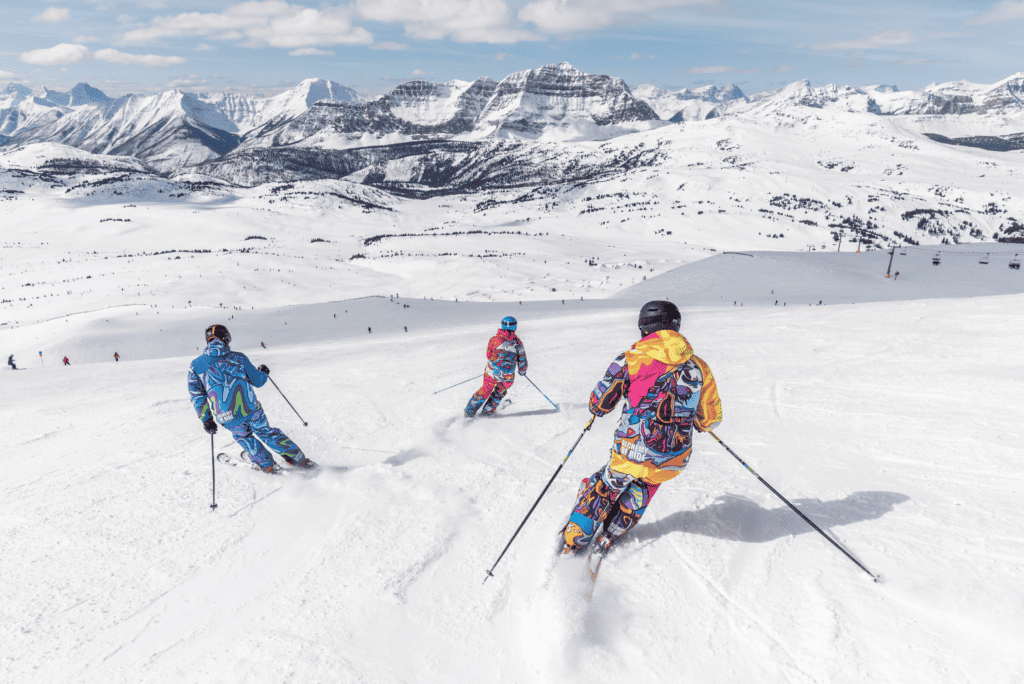
Teaching your toddler to ski can be a frustrating experience if it’s done wrong. Because of this, you mustn’t rush the process and go at their pace. Remember, you were at this stage once, and you know it takes time for things to click as they learn how to ski.
Here are a few tips to consider to help your toddler progress with their day skiing skills.
Before the First Lesson
If you want to give your toddler a head start, you can buy some plastic skis to help them learn how to ski. Using these at home will allow your toddler to develop their balance and upper body strength, get used to walking in them and making snowploughs, and see the ski edges, which help them turn and stop.
When you’re at your ski resort, if you have the opportunity, take your little one to a nursery slope so they can get used to the snow and how it feels before their ski lesson. This will also help them get used to wearing all the gear such as their ski pants and boots and how to walk in them.
To make the skis point together at the toe end, attach a clip to both skis, aiding your toddler to make a snowplough when they want to slow down.
After Their Initial Lessons
They’ve got those first lessons under their belt and they know how to keep their skis parallel and make a snowplough. The next step to helping your toddler progress is to get them to practice building on their balance and keeping their skis parallel. While it’s okay to ski with them between your skis when you’re introducing the sport to them, in the long run, this won’t develop independence.
It’s important to remember that it’s not all about spending as much time as possible on the slopes or taking chair lifts to different areas. Take some time to add fun in as well, whether that’s by making a snowman, making snow angels or having a snowball fight. This helps to break up their morning or afternoon on the mountain and will make their holiday more enjoyable.
It’s all about having fun, but hopefully, these tips will help your toddler develop their ski skills.
The Top 7 Ski Tips You Need to Know BEFORE You Hit the Slopes

Bring snacks with you. There’s nothing worse than being up the mountain, two ski runs away from a restaurant and your child decides they want something to eat and they won’t move until they’ve eaten something. Pick healthy snacks like apples, rice cakes, or raisins to keep their energy levels high until you can get to a restaurant or back to where you’re staying.
Many ski resorts will have a rental shop where you can borrow ski equipment. Take advantage of these. When they’re young and with feet still growing, there’s little point in buying ski boots or skis if you’re planning on heading out for some skiing. For beginner skiers who want to get a feel for ski boots, head to your nearest ski shop where you’ll be able to find what you need. It also means less hassle getting your toddler’s boots and skis to the ski resort.
Don’t expect too much on the first day of skiing. Skiing on snow is a different experience for toddlers, so let them get used to it before venturing too far with them. Go at their pace and see what they enjoy doing. It may take them a while to get into it, which is okay as it’s all about seeing what they want to do.
Toddlers learning how to ski won’t need to use a ski pole when they’re learning. These are for more advanced skiers.
For newbie skiers, the most effective way to stop is by doing a snowplough or making a pizza shape with their skis. A hockey stop, a parallel turn into sideways sliding until you stop, is something that can be mastered at a later stage.
Take plenty of photos and make sure there’s lots of positive encouragement. You have one opportunity to make a good impression on your child to show them that skiing is a fun and exciting sport to take part in. If they have positive memories to begin with, they are more likely to want to continue.
If your toddler isn’t having a good day or isn’t enjoying it as much as you thought, don’t push things. Instead, do something they want to do, like ice skating, and come back to it the next day.
What Are the Ski Run Colours?
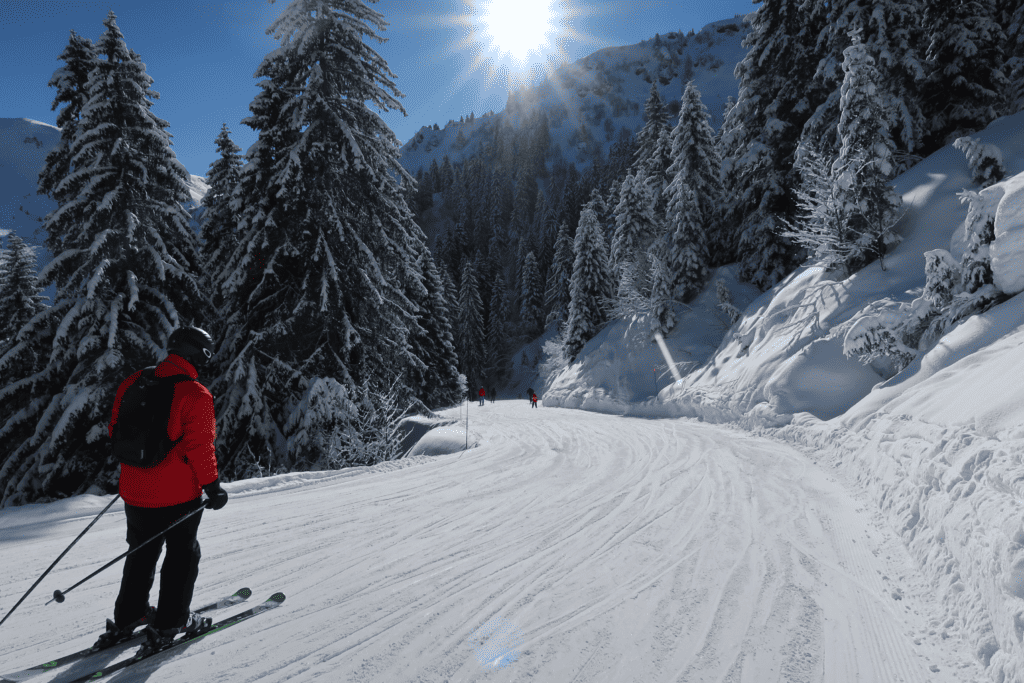
Ski slopes are graded by colour and this is associated with their level of difficulty.
In Europe, the easiest ski slope is green and the hardest is black. In North America, however, a green circle is the easiest run whereas a triple black diamond is for extremely difficult slopes. It’s worthwhile checking out the level of difficulty when heading to different countries and states as the symbols don’t always mean the same thing in each area.
This is certainly the case in North America. For instance, a black diamond may have varying degrees of difficulty in different states.
Europe
Green runs: easy
Blue runs: intermediate
Red runs: advanced
Black runs: expert
North America
Green circle: easiest
Blue square: moderately difficult
Black diamond: difficult
Double black diamond: very difficult
Triple black diamond: extremely difficult
How to Plan Your Ski Trip?

As with any holiday, it takes a bit of planning to ensure things go as smoothly as possible, especially if you’re travelling with little ones.
So when should you go skiing?
If you’re after a cost-effective option when you’re less likely to battle the crowds, then December is a great option. However, you do run the risk of seeing little snowfall. To avoid this possibility, head to a higher resort that’s sure to have plenty of snow.
For those magical Christmas getaways, you could hit the slopes during Christmas and New Year. Over the Christmas period, it’s less likely to be busy compared to New Year. You’ll also see families taking advantage of the school holidays as they make the most of the Christmas break.
January is another good month to head to a ski area where you’ll find snow. This time of the year is usually quiet and is a good time to learn to ski as the snow conditions will be ideal. As it’s still the middle of winter, expect chilly days and limited sunshine. With January being a quiet month, you may get accommodation at a discount.
The busiest time for getting lift passes up the mountain is February. Half-term holidays are in February, so expect many holidaymakers to hit the slopes. Prices tend to increase in February, but if you can get away a week before or a week after the half-term, you can expect great snow conditions.
Even though March brings more sunshine, you can still enjoy the mountain during a ski holiday. Take advantage of the morning conditions before the snow gets too slushy and chopped up.
April is the last month of the ski season and you usually get great deals during this month. Expect long sunny days and slushy conditions as the month progresses.
How to Keep Your Toddler Happy on the Ski Slope?
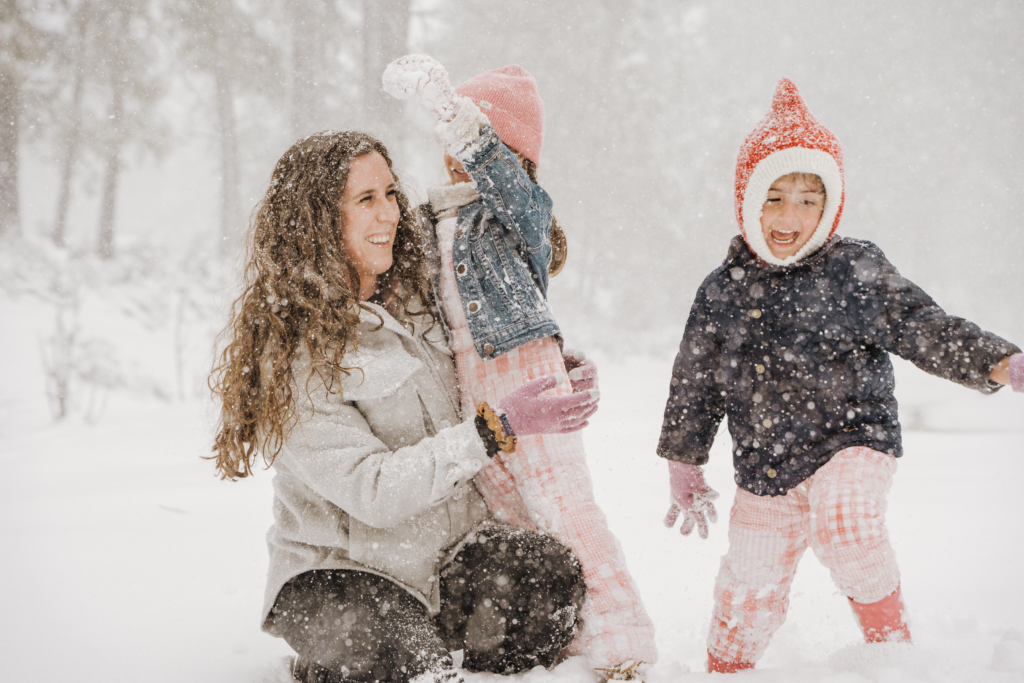
Taking your toddler on a ski holiday is an exciting experience. It’s a great time for a family to spend quality time together, which is why it’s important to make the most of the time away while ensuring everyone is happy.
To make your time as stress-free as possible, here are some handy tips to consider.
Prepare
Don’t leave things to the last minute. By booking ahead with your accommodation and ski lessons, if necessary, you’ll avoid disappointment. It will also give you more time to enjoy yourself with your family instead of worrying about last-minute things to sort out.
Choose the right ski resort
Seeing as you’re travelling with your family, little ones included, there’s little point in picking a resort that has a party vibe to it. Instead, choose one that’s family-friendly and has plenty of beginner areas.
Think About Connecting Travel
Most ski resorts aren’t close to an airport, which means you’ll need to sort out transport to your resort. Travelling with children means you’ll need to bring some form of entertainment to help pass the time. Card games, colouring books, and reading books are good choices. If you use an iPad on long journeys, make sure you download any programs in case you can’t get wifi access.
Be Patient
As mentioned before, children are less likely to listen to parents when they’re being taught to ski, but if you are going down the route of teaching your children, then all you can do is be patient with them.
Book lessons
Group or private lessons are great for building confidence and helping to gain those initial steps on flat terrain. Group lessons allow your toddler to meet new friends while building on their independence.
Private lessons are better suited depending on your needs and give a more 1-2-1 feel where they can progress quicker.
Do Morning lessons
Morning lessons are perfect as this enables the whole family to ski together in the afternoon. It also means that your toddler can further practice their skills, reinforcing what they’ve already learned. You’ll soon see them progressing from flat terrain territory to downhill ski ability.
Ski Together
Get everyone together and decide where you want to go on the piste map. Let your toddler pick which run they want to do and head to a lift station to do it. Maybe head to some of the runs your toddler would have done during their morning lesson and go from there.
Take the Time to Play
It’s not all about strapping on skis and spending the entire day going down different ski runs.
As most families are only able to get away for a ski trip once a year, it’s the perfect opportunity to embrace all that it offers. These adventures provide the ideal balance between exercise, family time, and freedom.
What’s not to love about it?
Take part in non-ski activities
Even though you’re up the mountain that doesn’t mean you’re restricted in what you can do when you’re not strapped into your skis. Many ski areas will have sledging, ice-skating, walking routes, and climbing that you can take part in.
If you weren’t able to get together on the slopes for a ski, these activities bring the family together, enabling you to catch up on the day.
Apres-ski
If you’ve got children who are a bit older, then a great way to unwind while still wearing your ski boots, and enjoy some music, is the apres-ski.
Kids’ fun parks
Remember, it’s not just your holiday, it’s your children’s too, so take some time out where they can enjoy doing something a bit different. Most resorts will have an area that’s designed as a kids’ fun park where children can play. They aren’t very big, but typically feature jumps, igloos, and slalom courses.
Break up your holiday by heading to one of these, helping to cement how much fun playing in the snow can be.
When Your Holiday’s Over
When you’re back home, look over your photos and videos with your children to show them how much fun they had. This is a great way to get them to remember what they’ve done and achieved while keeping them interested.
You never know but after seeing the photos and videos, they may want to go again.
Final Thoughts
A ski trip with the family isn’t the easiest, but it certainly is full of rewarding smiles and experiences when it’s done right.
If you’re a family who enjoys snow sports and are thinking about taking your little one to the mountains, go for it! The worst they can say is that they don’t like it, but at least you’ll have given it a try.
Hopefully, this blog will give you some pointers on how to make the most of your holiday when teaching your toddler to ski.


